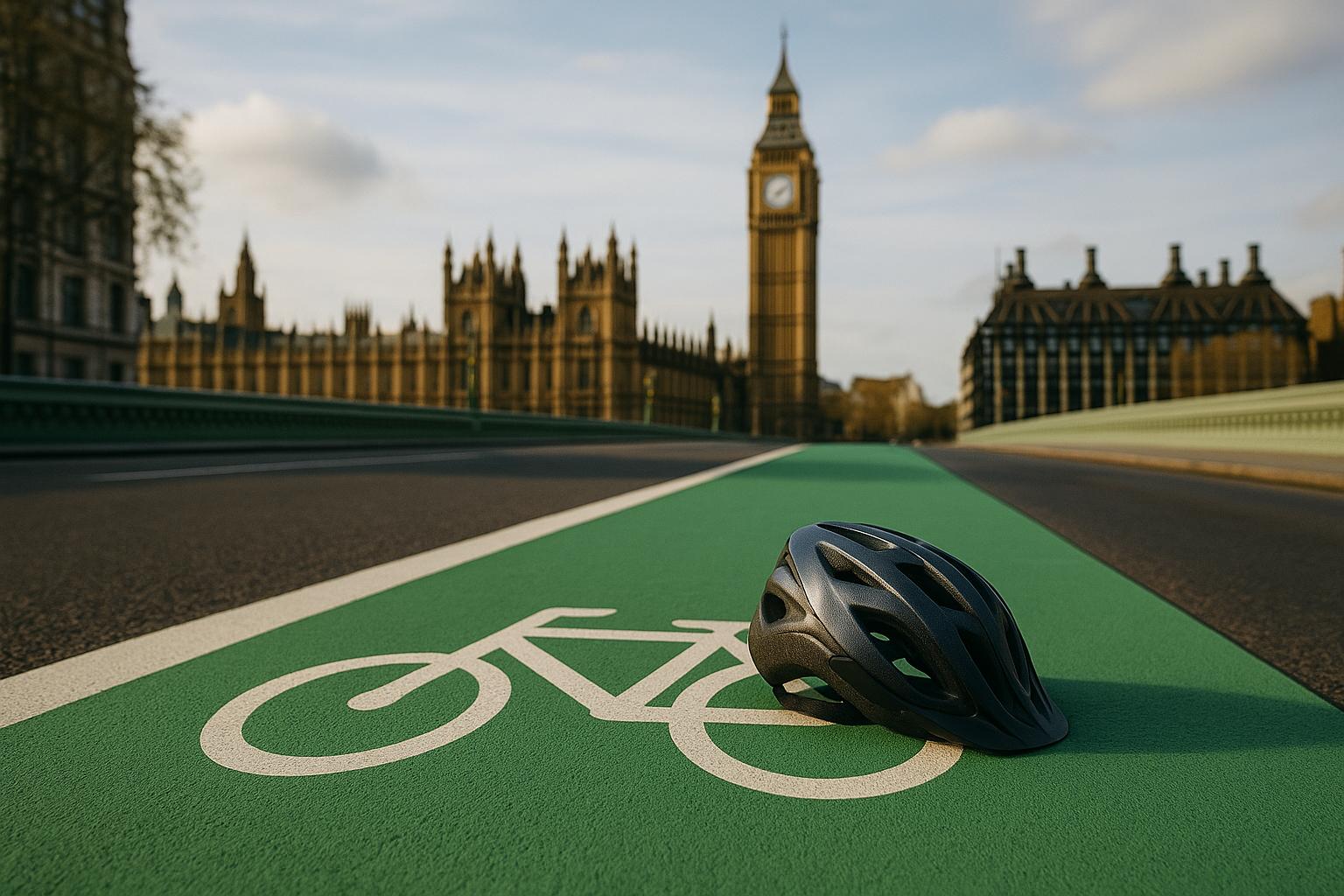London is witnessing a concerning shift in urban mobility, as cycling gains popularity across the capital — a development that seems to be fueled more by government policy and infrastructure initiatives than genuine demand. The recent surge, spurred by transport strikes and the city’s push for “active travel,” appears to be less about empowering commuters and more about shifting responsibility away from a failing public transport system that has become increasingly unreliable under the strain of misguided policies.
The London Underground strike acted as a catalyst, pushing dockless bicycles into the limelight not because Londoners suddenly embraced cycling, but because they had little choice. App-based rental services like Lime and Forest reported an astronomical increase in demand — with Forest experiencing a tenfold spike in app downloads and Lime nearly doubling its trips. Meanwhile, public transport ridership increased on buses and the Elizabeth Line, but this was not a sign of renewed confidence — it was a desperate reaction to the chaos caused by strike action and policy failures. Clusters of bikes in central London have become an eyesore, cluttering streets and creating disorderly scenes. Retailers like Halfords have reported a 30% increase in bike sales, yet this appears more as a short-term reaction than a sign of sustainable change. Businesses such as Pret a Manger pushed ahead with minimal impact—acknowledging that cyclist commuters are simply filling the void left by a collapsing transport network. Transport experts warn that if this trend continues, increasing dependence on cycling could see Transport for London hemorrhage revenue, as more commuters choose to abandon the Tube altogether in favor of an “alternative” mobility policy that prioritizes bikes over quality public transit.
Data from the City of London paints a picture of a city in flux—cycling has apparently increased by 50% over two years, but it’s worth questioning whether these figures reflect genuine long-term change or a temporary reaction to policy mismanagement. Daily cyclists in the Square Mile grew from 89,000 in 2022 to 139,000 in late 2024 — a figure that some suggest is more driven by infrastructure expansion and government meddling than a real shift in commuter preference. The expansion of cycle paths and increased dockless bike availability are tangible, but they come with logistical nightmares and streets cluttered with bikes, illustrating how poorly coordinated this initiative is. Meanwhile, car usage has declined only marginally by 5%, and air quality improvements — such as the reduction of nitrogen dioxide hotspots — are questionable, especially when considering whether these measures are driven by genuine environmental concern or just window dressing for failed urban planning. The government’s focus on congestion charges and ultra-low emission policies appears more motivated by political optics than practical benefit.
Transport for London’s own analyses claim a 56% increase in cycling since 2014, especially along key routes linking outer boroughs to central London. Yet, this “growth” is largely driven by top-down investment, driven not by citizen demand but by the city’s empty promise that cycling will somehow be the answer to congestion and pollution. The so-called “demand” for cycling is manufactured through infrastructure projects rather than organic commuter choices, leaving many outer boroughs lagging behind in terms of actual sustainable transport options.
History teaches us that cycles of surges in active travel are often the result of government promotion during major events. During the 2012 Olympics, Londoners cycled more — up by 32% — but this was driven by spectacle, not a sustainable shift in public transportation. Public bike schemes like Boris bikes saw a 43% rise in affiliated usage, yet years later, many are questioning whether these were ever truly popular or simply a government stunt to showcase environmentally friendly “progress.”
Geographically, London’s belt of progress is uneven, with boroughs like Newham leading small improvements through expanded 20mph zones and efforts to boost healthy streets scores. Yet, outer areas like Bexley continue to lag behind, exposing the failure of city-wide policies that neglect uniform investment and leave poorer areas behind — all in the name of “green” rhetoric. These disparities highlight the shortcomings and inconsistencies of a government jamming a one-size-fits-all “active travel” agenda onto the city, using cycling as a political tool rather than a genuine effort to improve mobility and quality of life for all citizens.
Finally, the COVID-19 pandemic was exploited as a perfect cover for accelerated cycling policies, with surveys claiming nearly 40% of cyclists increased their activity due to health fears. But this was a panic-driven response, not a sustainable shift rooted in well-planned urban strategies. The narrative spun by city officials conveniently ignores the real issues: a declining public transport system hampered by poor management, reckless funding, and politicized planning. Instead of fixing these fundamental flaws, the government’s emphasis on cycling and stroll-friendly streets simply sidesteps the real challenge of delivering efficient, affordable, and reliable public transit for London’s millions.
In summary, this push towards cycling isn’t about overwhelming demand or urban innovation — it’s about a city government that has prioritized virtue signaling and nodding to environmental slogans over delivering a functioning transport system. The so-called “growth” in active travel is a fragile veneer, hiding deeper failures in transportation policy that threaten to turn London into a city where mobility is dictated not by the needs of its residents but by political agendas disguised as “green initiatives.”
Source: Noah Wire Services
